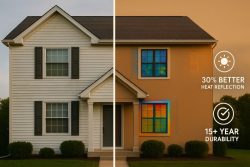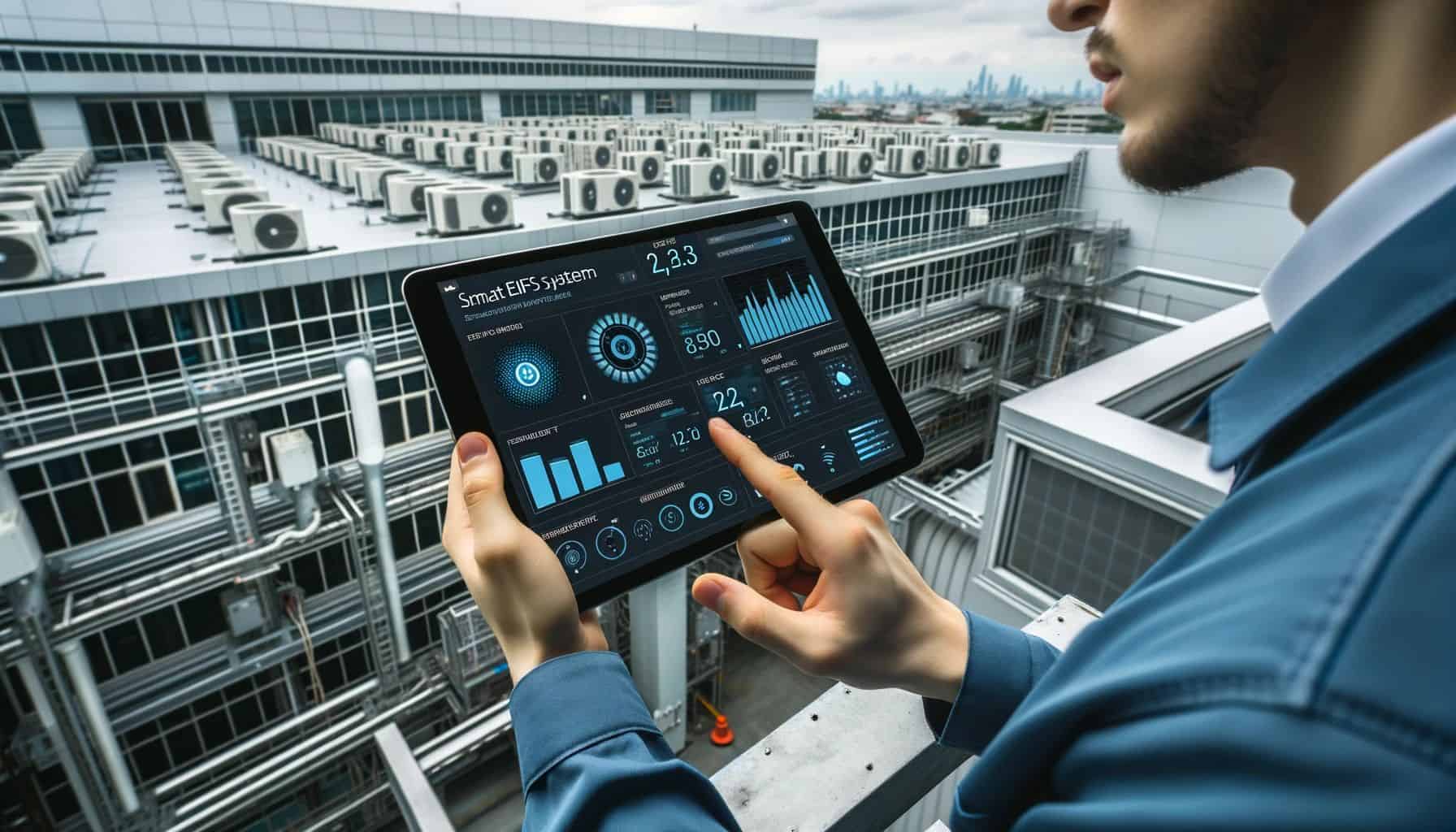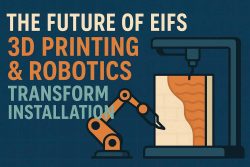Discover Why Industry Experts are Embracing EIFS as the Future of Exterior Design
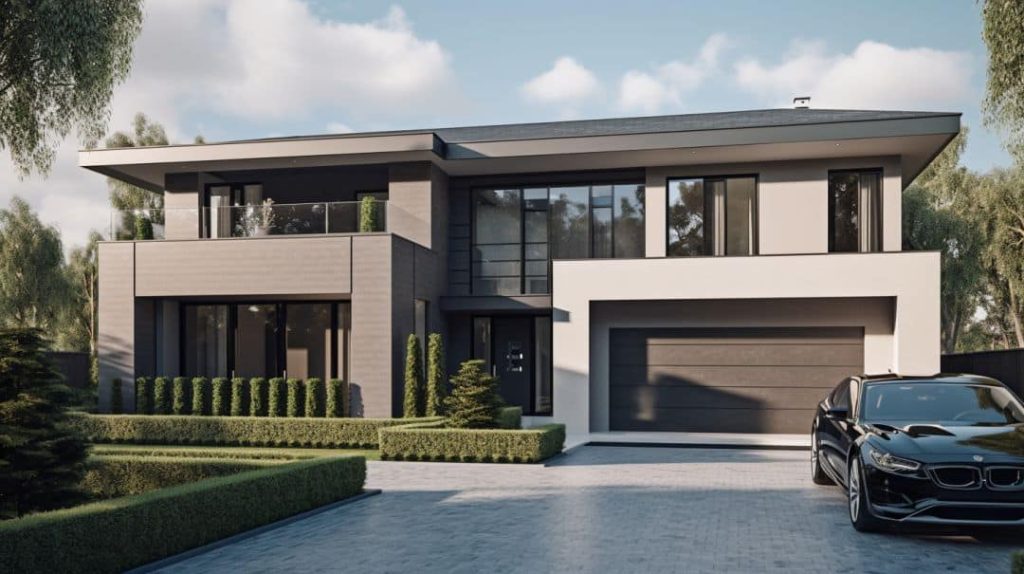
EIFS, also known as exterior insulation and finish systems, have been gaining immense popularity in recent years as an innovative exterior cladding solution. This exterior cladding system is revolutionizing the way architects and builders approach exterior design and construction.
In this comprehensive guide, we will explore all the benefits of EIFS, the different types available, proper installation techniques, maintenance best practices, and why EIFS is one of the top cladding solutions being chosen for commercial and residential buildings alike in 2023.
What is EIFS?
EIFS stands for “exterior insulation and finish system.” It is a non-load bearing, exterior wall cladding system that consists of five main components:
- Substrate: Typically plywood, oriented strand board or gypsum sheathing.
- Adhesive: Attaches insulation board to substrate.
- Insulation board: Expanded polystyrene (EPS) foam board.
- Base coat: Reinforcing fabric embedded in base coat over insulation board.
- Finish coat: Integrally colored and textured protective exterior acrylic finish.
EIFS provides a continuous layer of insulation and a finished exterior surface. It is designed to insulate and waterproof the building.
The EIFS industry includes manufacturers, suppliers, contractors, and other professionals. The EIFS Industry Members Association (EIMA) has established standards and guidelines for proper EIFS installation.
The Surge in Popularity of EIFS
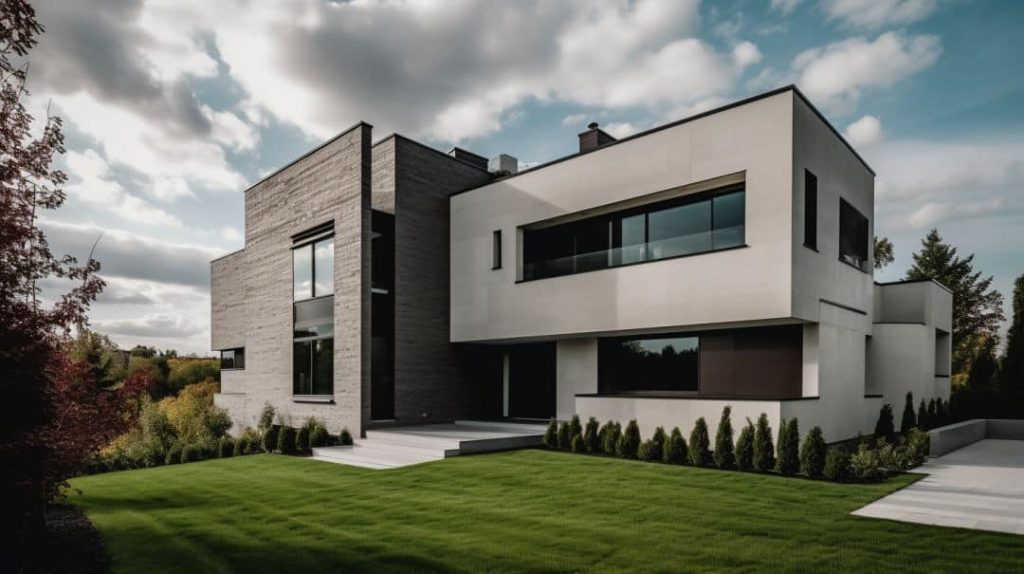
The global EIFS market size was valued at USD 14.32 billion in 2021. It is expected to grow at a CAGR of 8.4% from 2022 to 2030.
EIFS is quickly becoming one of the most popular exterior cladding options for both commercial and residential buildings. There are several key reasons driving the popularity of EIFS:
Energy Efficiency
EIFS provides superior insulation compared to other claddings. The EPS foam insulation board has an R-value of around R-4 per inch. This helps reduce air infiltration and improves the building’s thermal performance.
Design Flexibility
EIFS offers a wide range of finishes, colors, and textures. This allows architects great design freedom to create sleek, modern facades. Complex architectural shapes and curves are also possible with EIFS.
Cost Effectiveness
Properly installed EIFS is very cost-effective compared to other claddings. Minimal framing is required since EIFS is non-load bearing. Installation labor costs are low.
Low Maintenance
Once installed, EIFS requires very low maintenance. The durable finish coat protects the EPS foam from weathering. Just periodic cleaning and sealant renewal are needed.
Fire Resistance
EPS insulation offers good fire resistance with a Class A (Class 1) rating. The complete EIFS assembly provides added fire protection to the building.
With all of these benefits, it’s no wonder EIFS usage continues to grow exponentially.
The Two Main Types of EIFS
There are two main types of EIFS classified by where the insulation is installed:
Barrier EIFS
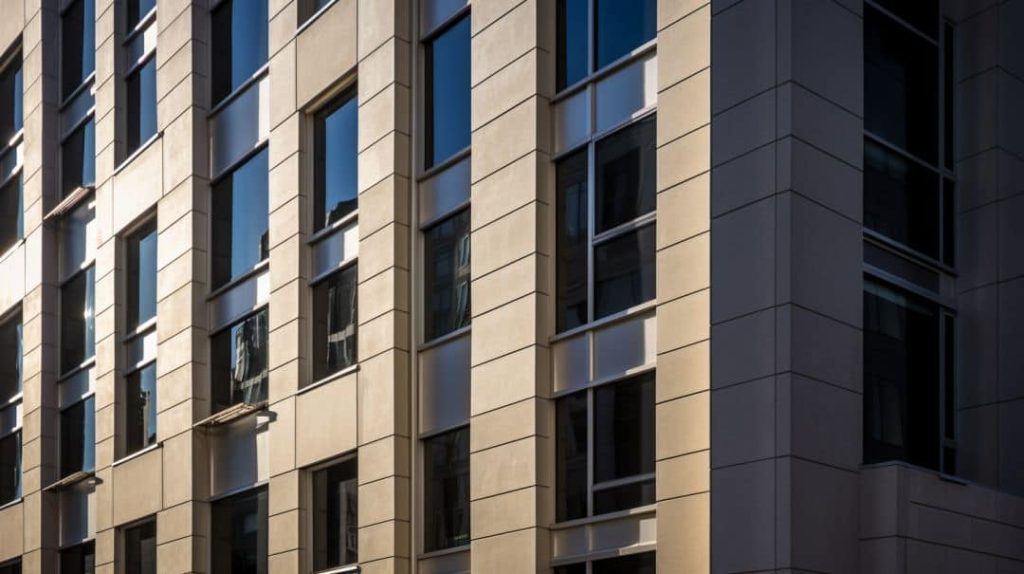
In barrier EIFS, a vapor retarder (such as asphalt-saturated kraft paper or plastic sheet) is applied over the sheathing. Then EPS insulation boards are adhered over the retarder and reinforcing mesh is installed with the base coat.
Barrier EIFS depends on both the vapor retarder and exterior acrylic finish to act as water barriers. Moisture is managed by restricting inward vapor diffusion.
Drainage EIFS
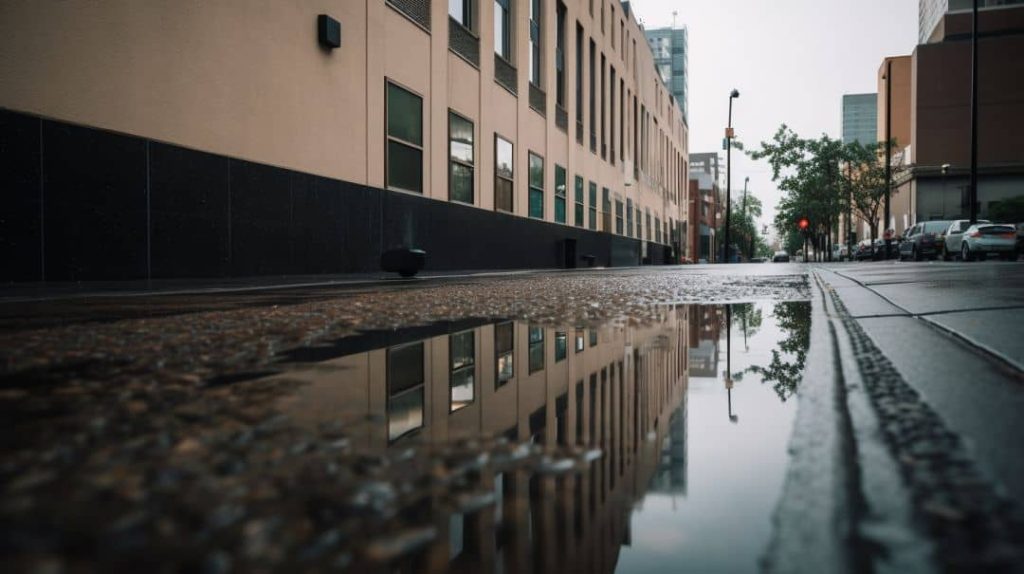
With drainage EIFS, a drainage plane is created by fastening vertically oriented strips of insulation board to the sheathing. This allows for drainage and moisture management.
An air gap between the insulation and substrate allows incidental moisture to drain down the wall and be ejected through weep holes at the base of the wall. The system “breathes” so water vapor can escape.
Drainage EIFS is considered more moisture-tolerant. It’s recommended in most climates today for both retrofit and new construction.
Top 10 Benefits of EIFS
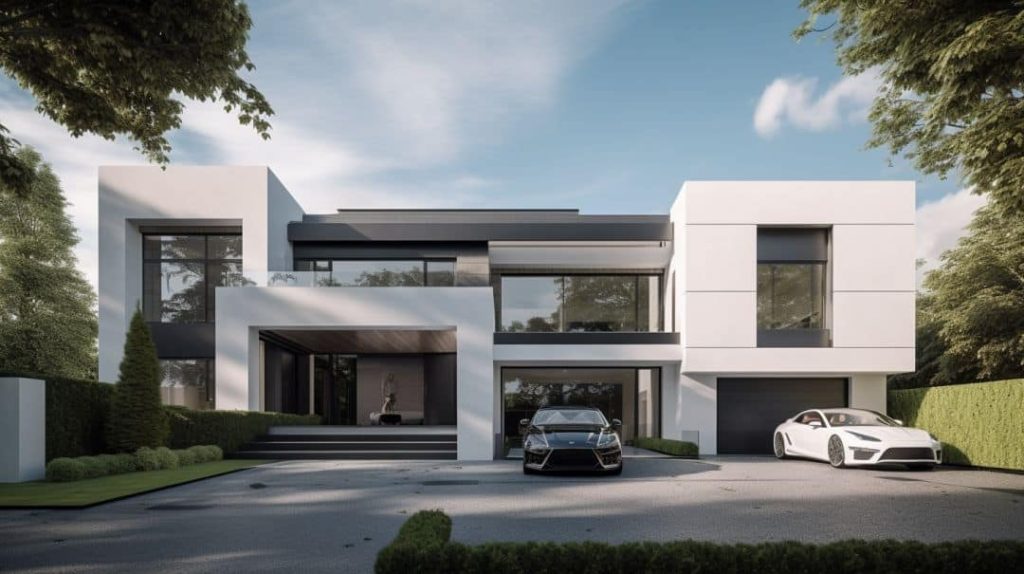
Let’s take a more in-depth look at the key advantages that EIFS offers over other exterior siding and cladding options:
1. Energy Efficiency and Savings
EIFS excels at insulating buildings. The EPS foam provides continuous insulation with very high R-values up to R-6 per inch. This greatly reduces heat loss in winter and heat gain in summer.
Buildings insulated with EIFS can see heating and cooling cost savings of up to 25% compared to uninsulated walls. EIFS improves the building envelope performance and helps reduce the building’s carbon footprint.
2. Water Protection from the Elements
EIFS forms a continuous barrier over the exterior walls. When properly installed with proper flashing details, it protects against rain and weather.
The acrylic finish repels liquid water while allowing water vapor to pass through. This protects the wall assembly against leaks, rot, and moisture damage.
3. Fire Resistance and Safety
The EPS insulation core provides excellent fire resistance. It is rated as a Class A (Class 1) material, which signifies the highest level of fire rated performance.
The complete EIFS assembly delays fire spread across the facade. Thermal barriers are installed per codes to protect combustible substrates like wood framing.
4. Durability and Long Service Life
EIFS stands up well to weather, UV rays, thermal expansion, physical impacts and other stresses when correctly installed. The acrylic finish coat resists fading, chalking, and dirt accumulation.
With proper maintenance, an EIFS facade can last over 30+ years. This longevity offsets the initial installation cost.
5. Design Versatility including Shapes and Profiles
One of the biggest advantages of EIFS is the design freedom it offers architects. EIFS can be shaped and molded into creative forms.
Non-planar insulated shapes like arches, domes, circles, and curved walls are possible. This allows very unique and modern facade designs.
6. Range of Textures, Colors and Finishes
EIFS comes in an unlimited range of colors, embedments, and textures. Many different architectural styles can be achieved from historic to contemporary.
New acrylic polymers allow metallic, sparkling, and iridescent finishes. Vertical reveals grooves, subway tile patterns, and other decorative touches are possible.
7. Cost Effectiveness and Value
Considering the energy, durability, and aesthetic benefits, EIFS offers great value per square foot compared to other facade options like brick, stucco, wood siding, or fiber cement.
The lightweight nature of EIFS also reduces structural costs. Overall, installed costs average $6-$9 per square foot which is very economical.
8. Low Maintenance Requirements
Since the reinforced base coat and acrylic finish protect the EPS foam insulation, an EIFS facade needs very little maintenance. Just periodic cleaning, caulking repairs, and recoating at 20+ years are typically needed.
EIFS does not require painting or staining. Its long service life offsets any maintenance costs.
9. Excellent Noise Reduction
The EPS insulation core absorbs and dampens sound. Tests show noise reductions of 40% or more compared to uninsulated facades. This helps create quieter interior spaces.
EIFS is great for buildings near airports, highways, and other noise sources. The mass insulation blocks exterior noise penetration through walls.
10. Lightweight Construction
EIFS adds very little weight to exterior walls since EPS foam weighs just 1-2 pounds per cubic foot. EIFS cladding averages just 4 pounds per square foot installed.
The lightweight, non-load-bearing nature of EIFS reduces structural requirements compared to masonry cladding. It cuts construction time and foundation costs.
How an EIFS Facade Is Installed
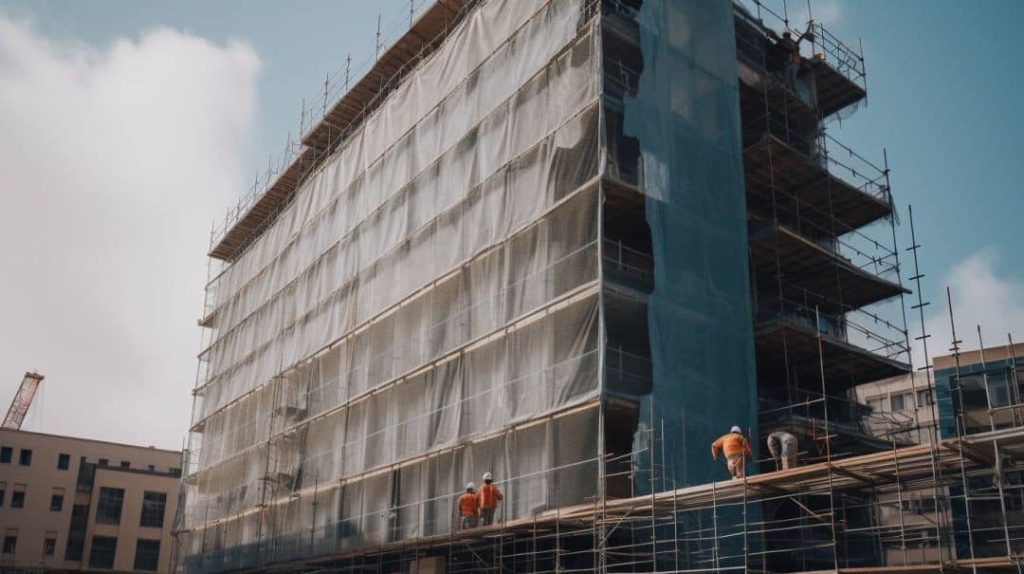
Installing an EIFS facade takes coordination of multiple trades. While it involves numerous steps, a qualified EIFS applicator can install the system efficiently.
Here is an overview of the major EIFS installation phases:
- Substrate Preparation: Sheathing (often gypsum or OSB) is fastened to wood or metal studs. Air/moisture barriers and flashing are installed per project details.
- Insulation Adhesion: Insulation boards (EPS foam or polyisocyanurate) adhere to the substrate with adhesive. Mechanical fasteners are also used.
- Base Coat Application: Fiberglass mesh is embedded in the base coat and installed over the insulation boards. This reinforces the system.
- Finish Coat Installation: Integral-colored, acrylic-based finish coat is troweled or sprayed onto the cured base coat to achieve the desired texture.
- Joint Sealing: EIFS requires proper caulking at penetrations, joints, windows, and other interfaces to allow for movement and prevent water entry.
- Flashing and Drainage: Proper flashing and weep holes are critical components of drainage EIFS to allow moisture to drain out of the wall assembly.
- Optional Aesthetic Features: Reveals, decorative shapes/profiles, or special finishes can be added.
5 Keys for Successful EIFS Installations
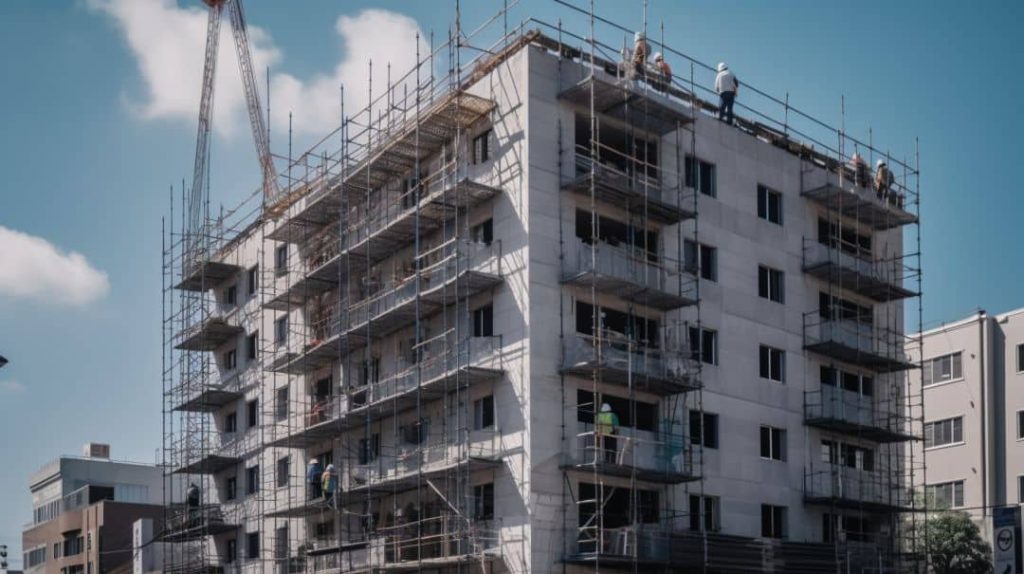
To gain the full benefits of EIFS insulation and water protection, the system must be installed correctly. Here are 5 best practices to ensure EIFS projects meet performance expectations:
- Retain an experienced, certified EIFS contractor who follows EIMA guidelines. Do not cut corners with a low bidder.
- Ensure the substrate is properly prepared with flashing details per project drawings. Moisture protection at openings and penetrations is crucial.
- Allow for proper expansion joints and water management features like weep holes and drainage channels, especially for larger projects.
- Use premium EIFS materials and components from reputable manufacturers like Dryvit®, Parex®, Sto Corp®, or Senergy®. Do not substitute inferior products to save money.
- Provide special inspections by a qualified inspector at defined checkpoints to validate water barriers, drainage, and other code requirements per IBC Chapter 17.
EIFS Inspections: Validation of Proper Installation
Third-party EIFS inspections provide quality assurance and validate proper installation per codes and contract documents. Inspectors check for:
- Approved EIFS materials and components used
- Moisture barriers, flashing details, and drainage provisions
- Insulation board coverage without gaps
- Base coat fully embedded in reinforcing mesh
- Adequate finish coat thickness and coverage
- Sealants installed per details at penetrations
- Overall workmanship and absence of damage
Special inspections improve EIFS performance and reduce moisture risks. They are required by IBC Chapter 17 for many taller, larger buildings.
Common Defects in EIFS Construction
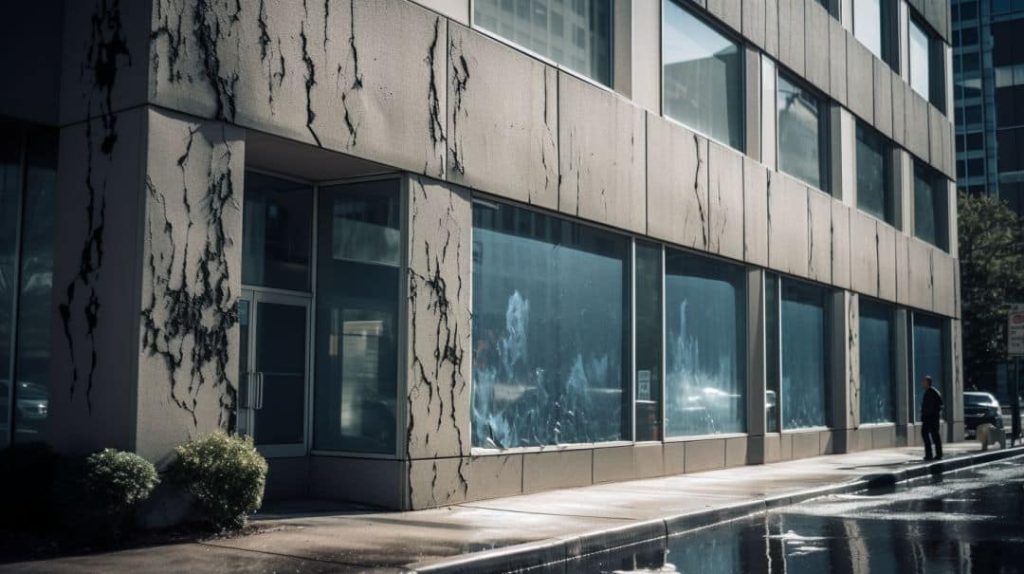
When EIFS installations are rushed or use substandard materials/workmanship, problems can occur. Some common EIFS construction defects include:
- Improper substrate. Sheathing is not properly attached or doesn’t meet flatness tolerances.
- Flashing omitted or installed incorrectly. Lack of head flashings, kickouts, proper integration with windows and roofing.
- Insufficient expansion joints. Excessive continuous areas without proper joints leads to stress cracks.
- Mesh not fully embedded. Reinforcing mesh needs full embedment in base coat without voids.
- Insulation board gaps. Boards must be continuous without gaps exceeding allowable tolerances.
- Poor finish coat coverage. Insufficient thickness or poor coverage allows water intrusion.
- Substandard caulking. Wrong caulk or poor application allows leaks at penetrations.
Such defects must be repaired to avoid compromising the EIFS envelope. Some may require removing areas and re-installing per manufacturer requirements.
Maintaining and Repairing EIFS Facades
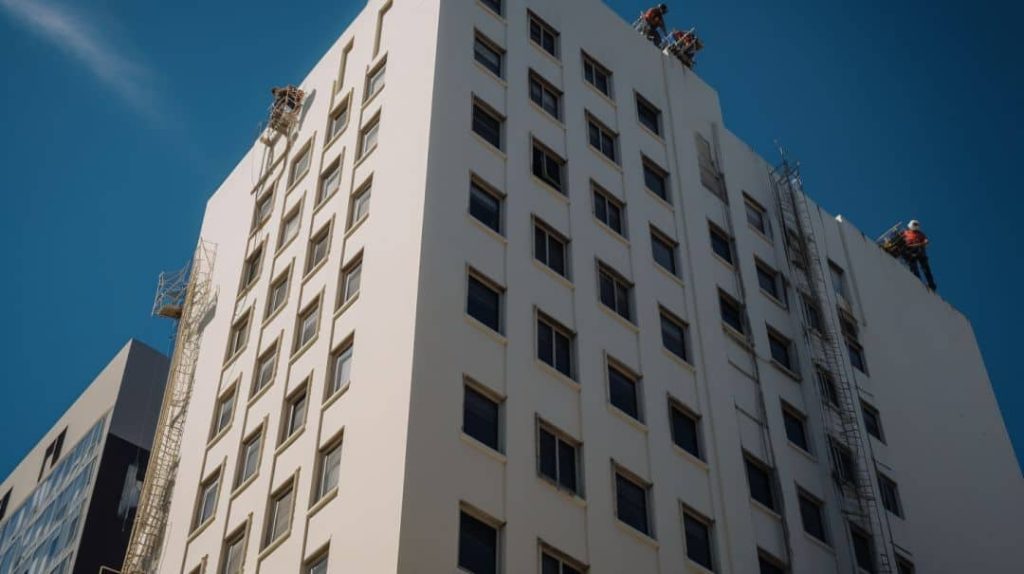
Like any facade, EIFS requires some periodic maintenance and repairs to maximize its longevity and aesthetics. Here are some best practices:
- Inspect sealants every 2-3 years and re-apply at window/door interfaces as needed. Use backer rod and high-quality polyurethane sealant.
- Periodically clean finish coat using manufacturer-recommended cleaners. Avoid pressure washing.
- Check for cracks or impact damage. Repair small cracks with elastomeric sealant. Larger cracks may require base coat repairs.
- Renew finish coat at 15-20 years old. Power wash, apply new base coat and finish coat for renewed appearance.
- Keep vegetation, trees, shrubs, sprinklers away from EIFS. Prevent dirt buildup.
- Check flashings, drainage channels and weep holes. Clear debris, re-open weeps if needed.
- Repair any damage from storms, vehicles, etc. before it compromises the system.
With proper maintenance and timely repairs, EIFS facades provide lasting protection and appeal.
Trends: The Future of EIFS Looks Bright
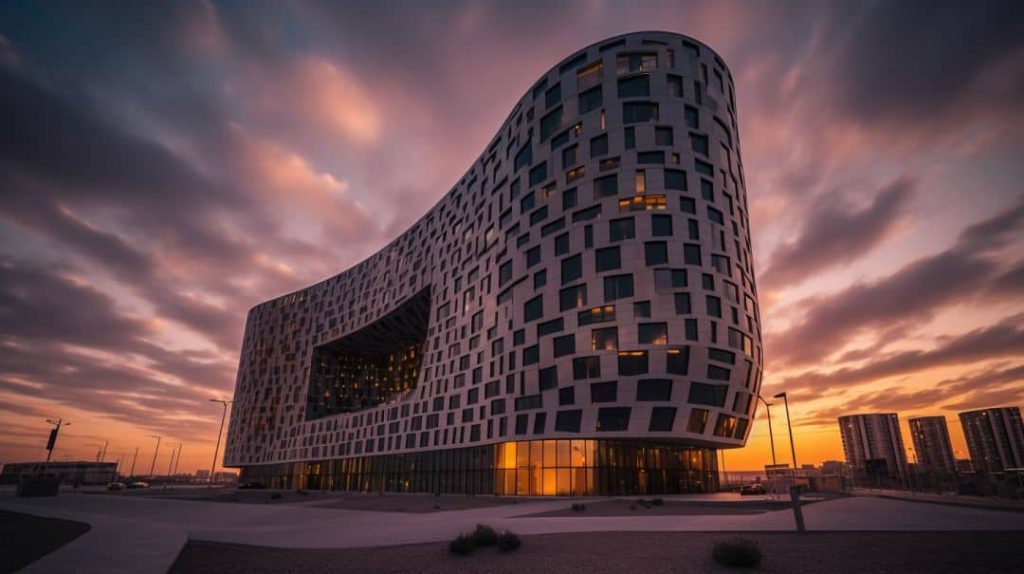
EIFS continues to gain market share for commercial and residential building exteriors. Here are some of the factors expected to drive EIFS usage higher:
- Focus on energy conservation: EIFS offers outstanding insulation value that aligns with net-zero energy goals. Look for more use in passive houses.
- Creative new polymer finishes: Coatings with metallic, self-cleaning and iridescent looks allow more dynamic designs.
- Moisture tolerance improvements: New moisture barrier and drainage innovations will expand EIFS to more climates.
- Pre-fabricated panels: Off-site fabrication with EIFS improves quality control and reduces project timelines.
- New fire testing standards: Stronger fire performance requirements play to EIFS strengths.
- Sustainable construction mandates: EIFS offers green benefits including regional materials, durability and thermal insulation.
EIFS provides an exterior cladding option that uniquely combines aesthetics, performance and value. Architects, contractors and building owners will continue to drive robust growth in EIFS usage.
Conclusion: Why Professionals Recommend EIFS
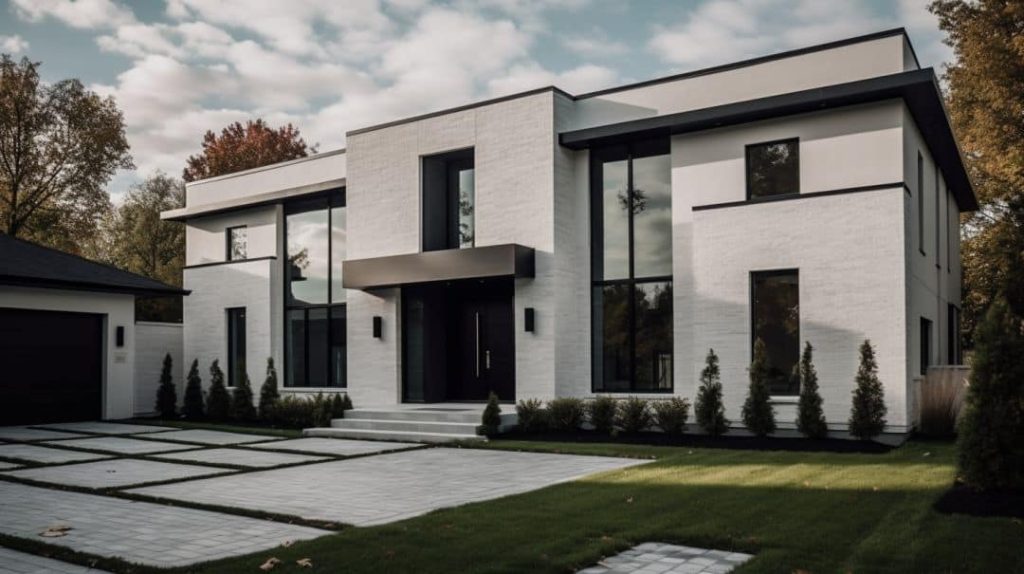
EIFS has proven itself as an innovative solution that offers:
- Superior thermal insulation to reduce heating and cooling loads
- Continuous weather protection against rain, humidity and moisture intrusion
- Design versatility with nearly unlimited finish options
- Faster, more economical installations than traditional claddings
- Minimal maintenance requirements for long-lasting performance
With the many EIFS benefits, it’s easy to see why architects, contractors and building owners alike are choosing exterior insulation and finish systems as their cladding of choice in 2023 and beyond.
FAQs
What are the main benefits of EIFS?
The main benefits of EIFS (exterior insulation and finish systems) are outstanding thermal insulation, weather protection, design versatility, cost-effectiveness, and low maintenance. EIFS provides a continuous insulation barrier that improves energy efficiency and protects against moisture intrusion. It offers many finish options and streamlined installation compared to other claddings.
What are the components that make up an EIFS wall assembly?
An EIFS wall assembly consists of a substrate (typically OSB or gypsum sheathing), adhesive, insulation boards (EPS foam), base coat embedded with reinforcing mesh, and a textured acrylic finish coat. All components work together to insulate and waterproof the facade.
What kind of maintenance is required for EIFS facades?
EIFS requires minimal maintenance to keep performing optimally over decades. Basic care involves checking sealants every few years and recaulking as needed. Periodic cleaning with recommended cleaners also helps. The finish coat may need renewal at around 15-20 years to restore appearance. Consult a specialist like Indiana Wall Systems for any repairs.
How often should EIFS be inspected?
EIFS should be inspected at least once a year to check for any damage, deterioration of caulking, clogged weep holes, cracking or other defects. Indiana Wall Systems employs certified inspectors who can thoroughly assess the health of your EIFS facade.
How long does EIFS last compared to other cladding options?
When properly installed and maintained, EIFS can last over 30 years. EIFS lasts longer than many claddings like wood or fiber cement siding that may need reapplication in just 10-15 years. The durability and longevity make EIFS a sound investment.

